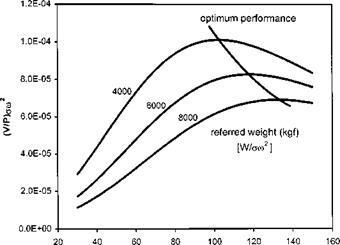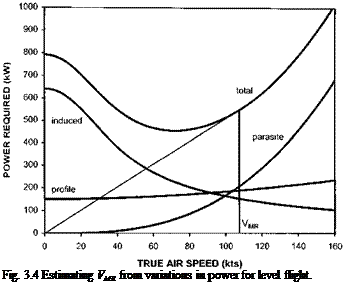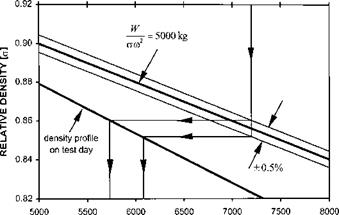It is important to note that the range of available values of the referred parameters may be severely limited by the geographical position of the test site. When planning a test, therefore, the test team needs to determine the full range of all the relevant quantities (Hp, OAT, AUM, IAS, ROC/ROD, NR) that may be experienced in operation. From this information, the required range of the referred parameters is derived. Having omitted any combinations of parameters that do not correspond with practical flight conditions, a test site must be chosen that provides the most suitable range of atmospheric conditions. Note that certain combinations of referred parameters need not be tested, such as a maximum value of W/8 and a minimum value of m/^9 as one represents the highest and the other the lowest operational altitude. It may be necessary to choose, or at least recommend, two or more sites so that the full range of test conditions is obtained.
1.4 LEVEL FLIGHT PERFORMANCE TESTING
Helicopters, along with most other air vehicles, spend a significant amount of time in a cruise configuration. Depending on the role of the rotorcraft, it may be required to cover the greatest distance or remain aloft for the maximum time on a given quantity of fuel. In order to determine the optimum airspeed for either requirement it is necessary to gather level flight performance test data. There are standard methods for measuring and presenting the performance of turbine-engined helicopters in terms of referred parameters [3.4].
Although it is common practice in a limited test programme to document simply the torque required, two major advantages accrue if a full set of engine performance data is gathered in the initial phase of a large test programme. Assumptions based on
constant SFC can be relaxed; and complex fuel massflow measuring equipment need not be fitted on subsequent trials as the variation of fuel burn with power and engine life will have been determined.
It is important that the performance of a helicopter in level forward flight throughout its speed range is well documented. Power required and fuel usage information is needed to determine the helicopter’s suitability for a given role, to check the performance against specification requirements, and to provide data for inclusion in the Operating Data Manual (ODM). Generally, a test establishment will carry out spot checks of the helicopter manufacturer’s data but occasionally a full performance evaluation will be required covering a wide range of conditions of AUM, altitude, outside air temperature (OAT) and rotor RPM.
The helicopter operator will use the ODM performance data to determine optimum altitudes, airspeeds and rotor speeds to fly for maximum range and endurance under all likely conditions of AUM and OAT. In addition, the maximum and minimum level flight airspeeds available under given conditions and the achievable range or radius of action will be obtained from this published data.



















